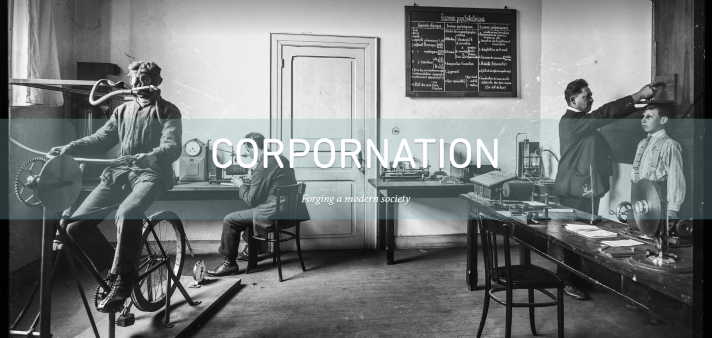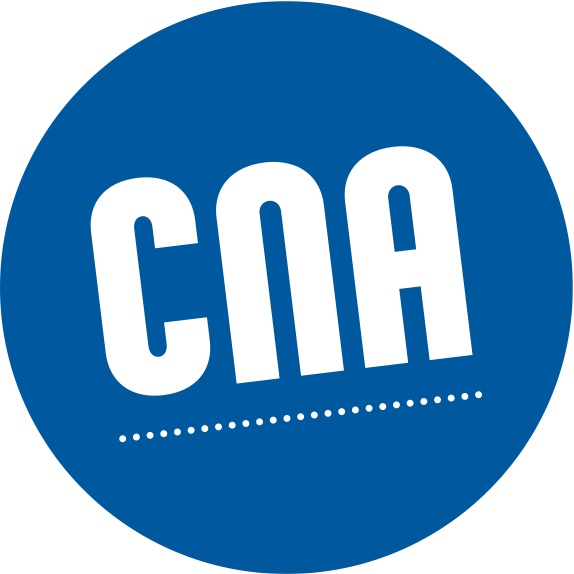The FNR-funded FAMOSO-2 project (2014–2018) is a follow-up project to FAMOSO (2012–2015). Whereas FAMOSO focused on the social-educational reform initiatives launched by the Aciéries réunies de Burbach-Eich-Dudelange (ARBED – United Steelworks of Burbach-Eich-Dudelange) in times of social unrest, FAMOSO-2 concentrates on how the image of future workers as good citizens of an industrialised modern Luxembourg was established, promoted and communicated by modern technologies. The FAMOSO projects therefore move beyond traditional social histories of industrialisation, labour history, social work, social welfare and social hygiene. Instead, the projects elaborate on interconnected and internationally entwined socio-cultural and body-sensorial technologies of modernity that were mediated by various modes of (re)presentation (including promotional brochures, popular magazines and visual media such as photography and film, as well as scientific practices of experimentation, display and visualisation) and involved various players. At the centre of these technologies were the human body, human-machine relationships, the shaping of modern subjects and their sensory interactions with the technosphere. The intellectual focus of FAMOSO and FAMOSO-2 is therefore the materialities and mechanisms, travels and interconnections of those technologies that gave birth to the “complex” of modern life.

At the beginning of FAMOSO and FAMOSO-2 stood a huge holding of approximately 2,400 glass plate negatives and positives archived at the Centre national de l’audiovisuel (CNA – National Audiovisual Centre). The glass plates relate to the Luxembourg steel company Aciéries réunies de Burbach-Eich-Dudelange (ARBED – United Steelworks of Burbach-Eich-Dudelange), a global player in the 20th-century steel and iron business. The large number of glass plates as well as the various historical traces of reproduction on their surfaces indicate the importance of the technology of photography for the company and for shaping modern Luxembourg. Luxembourg’s industrialists and their families were eager to become a modern entrepreneurial elite and to assume a leading role in the design of a modern society. One of their main goals was to emotionally and physically connect the workers to industrial production, thus changing mentalities and cultural values. Industrial families became efficient reformers and multipliers who, by using manifold channels of communication and modern technologies, could easily outperform government officials, traditionalist church representatives and political decision-makers. They thereby found themselves in fierce competition with socialist and communist workers’ associations.
The FAMOSO projects are based on the following research strands:
One strand examines how workers’ bodies and senses were mapped, measured and shaped by social-educational initiatives. Here, the focus is on the mechanical registration of human bodies in the context of labour sciences and psychometric technologies and on how these new science-based approaches became a key part of professional guidance and vocational training. A related research perspective looks at workers’ bodies as “sensuous geographies” and traces the creation of “embodied relations” in the context of industrial production. A major finding of the FAMOSO projects is that sensory learning processes encoded moral values and evoked intimacy and feelings of ownership rather than alienation. Exploring the methods and mechanisms associated with this seemingly absent and subtle disciplinary regime is a theme that connects the different lines of research within the FAMOSO projects.
Another strand of FAMOSO deals with the analysis of visual materials and looks at how different media played an instrumental role in shaping identities and subjectivities in times of industrialisation. One sub-strand investigates the different ways in which industrial work and the working man’s body was depicted and displayed in various media and artistic genres by the labour movement and industrial stakeholders. Here, we look at the shifting motifs and the way they appeared in the media. Artistic productions and their reproductions were part of an overarching discourse on the making of the new worker and the working class that was at the heart of the nation-building process and national identity formation. At an individual level this included the acquisition of cultural memories, values and behaviours. A second sub-strand looks at photographs as social and relational objects that reach out to audiences and take part in meaning-making processes. These processes can also be traced through the CNA’s glass plate holdings by focusing on photography’s significant role as a mobile tool of communication. The glass plates in the CNA holdings appeared in different modes of reproduction and in various media; reaching out to different viewers and audiences, they helped shape societal and corporate hierarchies and thus also helped construct subjectivities.
Finally, a third strand of research looks at ARBED’s international iron and steel connections and its expansion to global markets. After the First World War, ARBED established the sales company COLUMETA (Comptoir métallurgique luxembourgeois), which also had a branch office in Japan. A first sub-strand takes a look at this adventurous personal, financial and economic endeavour as a difficult intercultural encounter that also affected diplomatic ties between Luxembourg and Japan. Connections between ARBED, Luxembourg and Japan are also analysed in the context of Aline Mayrisch’s trips to Japan and the collection of photographs she assembled during these journeys in 1930 and 1934. A second sub-strand looks at the transatlantic entanglements of ARBED and how the company served as a model for social-educational reform in the Brazilian state of Minas Gerais, where ARBED established a steel company in 1921. It examines how utopian social ideas and economic rationales travelled around the globe and thus became intertwined with local cultures and national political agendas. More particularly, this transformation process is analysed as an applied economy of bodies and minds aimed at establishing a utopian corpor(n)ation which, in turn, was promoted as a successful model for modern Brazil.
FAMOSO Publications (2013–2018)
Dittrich, Klaus. “Selling Luxembourgian Steel in Japan: Columeta Tokyo, 1925 to 1941.” Zeitschrift für Unternehmensgeschichte 61 (2016): 215–36.
———. “Buddhism, Business, and Red-Cross Diplomacy: Aline Mayrisch-de Saint Hubert’s Journeys to East Asia in the Interwar Period.” In Priem and Herman, Fabricating Modern Societies.
Hadzalic, Irma. “Sick and Weak But Made of Steel: Luxembourgian Open-Air Schools and Other Responses to the Spread of Tuberculosis at the Beginning of the 20th Century.” Revista de História e Historiografia da Educação 1, no. 1 (2017): 44–64.
———. “Transatlantic Iron Connections: Education, Emotion, and the Making of a Productive Workforce in Minas Gerais, Brazil (ca. 1910–1960).” In Priem and Herman, Fabricating Modern Societies.
Herman, Frederik. “Forging Harmony in the Social Organism: Industry and the Power of Psychometric Techniques.” History of Education 43, no. 5 (2014): 592–614.
Herman, Frederik, and Ira Plein. “Envisioning the Industrial Present: Pathways of Cultural Learning in Luxembourg (1880s–1920s).” Paedagogiga Historica 53, no. 3 (2017): 268-284.
Herman, Frederik, and Karin Priem. “The Eye of the Machine: Labour Sciences and the Mechanical Registration of the Human Body.” In Priem and Herman, Fabricating Modern Societies.
Herman, Frederik, Karin Priem, and Geert Thyssen. “Body_Machine? Encounters of the Human and the Mechanical in Education, Industry and Science.” History of Education 46 (2017): 108–27.
———. “Körper_Maschinen? Die Verschmelzung von Mensch und Technik in Pädagogik, Industrie und Wissenschaft.” Jahrbuch für Historische Bildungsforschung 20 (2014): 47–75.
Novella, Enric. “Tuberculosis and Political Economy: Industrial Wealth and National Health in the Grand Duchy of Luxembourg, c. 1900-1940,” Social History of Medicine (forthcoming).
———. “Germs, Bodies, and Selves: Tuberculosis, Social Government, and the Promotion of Health-Conscious Behavior in the Early Twentieth Century.” In Priem and Herman, Fabricating Modern Societies.
Plein, Ira. “’Der tägliche Weg zur Schicht’. Aspekte zur poroletarischen Kunst Albert Kaisers in der Zwischenkriegszeit.” In 100 Joer fräi Gewerkschaften 1916–2016, edited by Fréderik Krier, Jacques Maas, Arnaud Sauer and Denis Scuto, 83–97. Esch-sur-Alzette: OGBL, 2016.
———. “Machines, Masses, and Metaphors: The Visual Making of Industrial Work(ers) in Interwar Luxembourg.” In Priem and Herman, Fabricating Modern Societies.
Poos, Françoise. “Photography as a Space for Constructing Subjectivities: Luxemburg’s Steel Dynasties and the Modern Workforce As Seen Through the Glass Plate Negatives from the Institut Emile Metz.” In Priem and Herman, Fabricating Modern Societies.
Priem, Karin, and Frederik Herman, eds. Fabricating Modern Societies: Education, Body and Mind in the “Age of Steel.” Leiden: Brill, forthcoming.
———. “Hautnah. Materialität der Moderne und sensomotorische Ansätze in der Berufsbildung im “Zeitalter des Stahles.” In Die Sache(n) der Bildung, edited by Christiane Thompson, Rita Casale and Norbert Ricken, 213–39. Paderborn: Ferdinand Schöningh, 2017.
———. “Putting Male and Female Bodies in Their Places: Arenas and Theatres of Educational Reform.” In Education across Europe: A Visual Conversation, edited by Catherine Burke, Ian Grosvenor, Béatrice Haenggeli-Jenni, Helena Ribeiro de Castro, Elena Tabacchi, Geert Thyssen, and Pieter Verstraete, 43–46. Network 17 – Histories of Education, EERA, 2014.
———. “Sensuous Geographies in the ‘Age of Steel’: Educating Future Workers’ Bodies in Time and Space (1900–1940).” In Priem and Herman, Fabricating Modern Societies.
Priem, Karin, and Geert Thyssen. “Fragmented Utopia: Luxembourgian Industrialists, Intellectual Networks and Social-Educational Reforms between Tradition and Avant-Garde.” Jahrbuch für Historische Bildungsforschung 19 (2013): 106–26.
Thyssen, Geert. “Engineered Communities? Industry, Open-Air Schools, and Imaginaries of Belonging (c. 1913–1963).” History of Education & Children’s Literature X, no. 2 (2015): 297–320.
Thyssen, Geert, and Klaus Dittrich. “Water and Dust: Recovering Washed-Out Pasts of Industry in Luxembourg.” In Education across Europe: A Visual Conversation, edited by Catherine Burke, Ian Grosvenor, Béatrice Haenggeli-Jenni, Helena Ribeiro de Castro, Elena Tabacchi, Geert Thyssen, and Pieter Verstraete, 63–66. Network 17 – Histories of Education, EERA, 2014.




